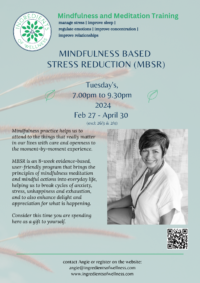Moon Trekking Madness
Are we crazy for doing this? A question that crossed my mind more than once as I powered on and up through the night during the annual MoonTrekker race across Lantau Island on October 10.

A tough course is nearly an understatement for the grueling 43km or 30km options, that took the us and around 1500 competitors through some if the most picturesque parts of Lantau, even at night. Somehow the pull of the just waning moon (full moon two days earlier) added to the spectacular views throughout the hike.
The vibe and atmosphere through the many hours on the trail was great with moral support from other competitors assured when you felt like dropping out from exhaustion or legs that just wouldn’t climb another step.
This was my second moontrekker and just one of many 15-30km hiking and trail running races I’ve competed in over the past few years. Although I swear off them after every race, as I did with this last one, I keep going back, and I’m certain I’ll be back for at least one more in 2015, all the more satisfying in my 50th year!
Why do I keep going back?
Fitness, the pleasure of being out in nature in Hong Kong’s amazing country side, wellbeing, spectacular scenery…all in that order. Competing is also up there as this creates a commitment and a challenge.
But now to the reason for this post. I want to share my post training, and what should have been post event, therapy. Yes, should have been! because I didn’t follow the post training regime I had perfected over the past couple of months and as a result recovery was oh sooo much longer and more painful.
Stretching and restorative yoga
After pounding the trails both up and down – there is not a lot of flat on HK trails – for a few hours the legs and hips can feel tight. I also have circulation issues so after a few hours it can feel like there is no blood flowing to these regions.
If I’m not coming home immediately after a long training session I will do a few stretches that focus on hamstrings (revolving triangle, wide angle seated forward bend), hip flexors (fire log, runners lunge), calves, glutes (happy baby, pigeon), and lower back (reclining twists). (Yoga journal has a series of suggested asana’s for various parts of the anatomy).
All, or at least a few of these stretches get my old bones through until I get home. Within 24 hours I will also try to do a restorative or yin yoga class from one of the many classes available on Yogaglo.com. If I can’t get to do a yoga class then I make certain I get my legs up the wall – Viparit Karani – for at least 10 minutes before I go to bed. This highly restorative pose does wonders for relieving tired legs and feet and as it is an inversion helps calm the mind and prepare for sleep. A must for any restorative repertoire.
Protein and other food
In any form of endurance workout your muscles get worked hard, and may even be overworked so they need to recover. Muscles need protein to repair and recover. Animal proteins are better for muscle recovery as they comprise all the essential amino acids needed. Various studies suggest somewhere between 1.8 – 3 gm per kg after exercise, depending on the activity and muscle use. In addition to aiding recovery, proteins help to grow and maintain lean muscle mass.
A quick and easy post training meal is a protein smoothie using why protein . This is a favorite at the moment:
Pineapple, 2 scoops whey protein (we use Dr Mercola), kale or spinach, blueberries, pumpkin seeds, 1 tsp Messene InLiven, 1 tsp Miessence Berry Radical.
Blend and enjoy!
In this article Dr Mercola says,
First, it’s important to remember that what you eat can either add to or detract from your exercise benefits, and if you’re devoting the time to exercise for health and longevity, you’d be well advised to harness your meals to support your goals, not detract from them.
With that in mind, I am rethinking some of my previous post workout food options, which have included:
- Spaghetti meatballs – focusing on the meat rather than the pasta
- Hamburgers – in future I’ll be focusing on the meat and vegetables / salad rather than the carbs
- Roast chicken and roast vegetables or salad
- Vegetable omelet or scrambled eggs with tomatoes and mushrooms
What do you eat after a long strenuous workout?
Epsom Salts bath with healing essential oils
The best part of post training recovery is of course the healing bath. Epsom salts (magnesium sulfate) as an anti-inflammatory therapy helps relieve sore muscles and replenish the bodies need for magnesium and sulfate. A careful selection of essential oils can have your bones feeling recovered and somewhat normal again. These are the one’s I use, either as a blend or on their own. Use 6-10 drops mixed with some carrier oil or in a small amount of milk for better dispersion.
Lavender – calmative – good for muscular aches and pains
Rosemary – antioxidant, anti-inflammatory – good for tired, overworked and sore muscles and stimulates blood circulation
Eucalyptus – for muscular aches and pains
Chamomile – calmative and anti-inflammatory – good for general muscles aches and soreness
Essential oils in baths may be contradictory for those with skin conditions such as eczema or psoriasis.
Well that;’s it. My post endurance training recovery plan. Next race I’ll will make sure I stick to it!
I’d love to hear what your regime is!
If you are interested here are some of photo highlights from the Moontrekker
On a closing note here is a short video by photographer Will Cho that captures the beauty of Lantau Island where this race was held.



